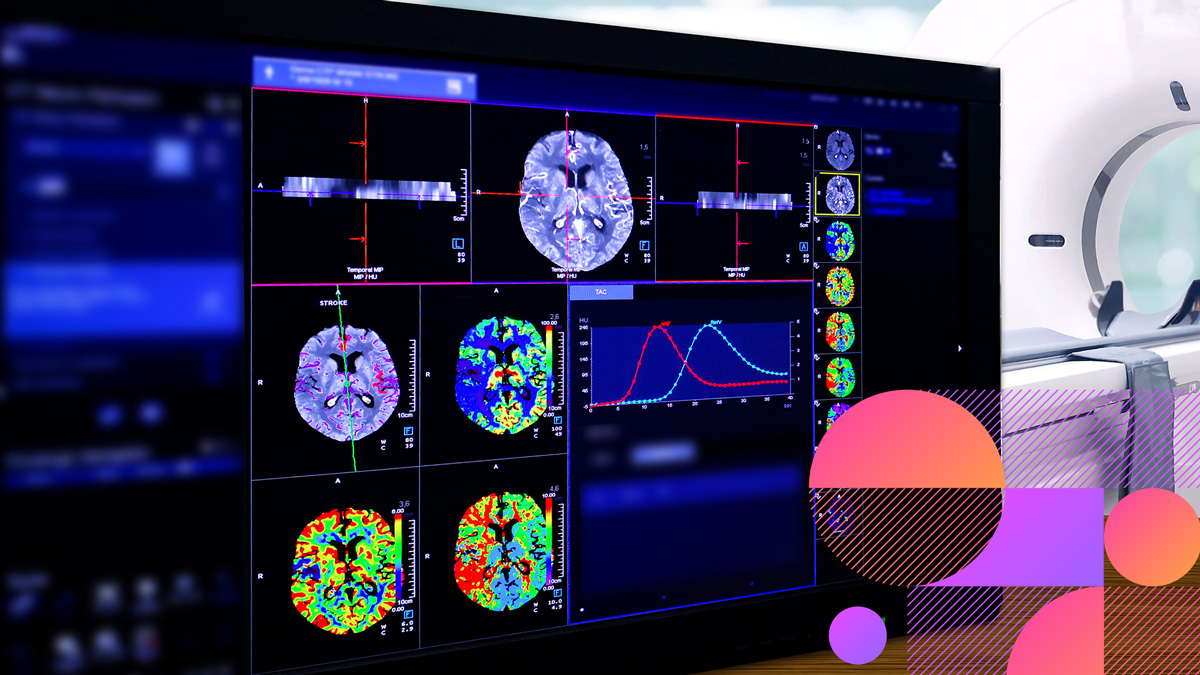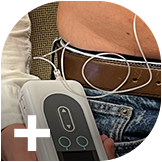Unlocking Parkinson's progress: The power of patient-provider partnerships
Parkinson’s disease (PD) is a neurodegenerative disease that affects around 10 million people globally, characterised by low levels of the neurotransmitter dopamine. On average, two people are diagnosed with PD in England every single hour per day. Patient organisation Parkinson’s UK estimates that, with population growth and ageing, the number of diagnoses could increase by 25% by the end of the decade.
Alongside this increase, though, the current treatment landscape for Parkinson’s disease is evolving rapidly, with new therapies and innovations promising to improve patient outcomes and quality of life.
Current standard of care
To find out more about the current Parkinson’s disease landscape, emerging therapies, and latest advancements, as well as areas of innovation and progress, pharmaphorum spoke with Ryan Case, senior medical director of medical affairs at Mitsubishi Tanabe Pharma America (MTPA).
“For a long time, the holy grail of Parkinson's development [has been] to really focus on a cure or some kind of disease-modifying therapy,” explained Case. “However, there are a lot of challenges in the Parkinson's space that limit that from becoming a reality. One is understanding exactly what the pathophysiology is and then, of course, working towards those mechanisms of having some type of therapy to treat them. One of the biggest advancements that's happened just recently is [a] shift towards redefining Parkinson's disease with more of a biological basis.”
Cure Parkinson’s has supported a number of initiatives over the years to help address this, both in the UK and globally. Such redefinition, differing from a clinical diagnosis, is hoped to drive toward disease-modifying therapies for Parkinson’s.
“While there are a number of Parkinson's disease therapies that are out there that generally help to manage symptoms, there are still a lot of unmet needs that patients face in managing those symptoms,” Case continued. “There are many who believe that Parkinson's disease is actually a misnomer. [They believe] what we're looking at is a million different individual personal little syndromes that fall into this umbrella of Parkinson's disease.”
Parkinson’s is often characterised by dystonia and dyskinesia, extra movements that can, but don’t always, occur with the disease. They’re different from the core symptoms like tremor, slowness, and stiffness. However, it can sometimes be challenging to distinguish between dystonia and dyskinesia from tremor in Parkinson’s.
According to the British National Formulary (BNF), in the early stages of Parkinson's disease, patients whose motor symptoms decrease their quality of life should be offered levodopa combined with carbidopa (co-careldopa) or benserazide (co-beneldopa). Parkinson's disease patients whose motor symptoms do not affect their quality of life could be prescribed a choice of levodopa, non-ergot-derived dopamine-receptor agonists (pramipexole, ropinirole, or rotigotine) or monoamine-oxidase-B (MAO-B) inhibitors (rasagiline, safinamide, or selegiline hydrochloride).
Indeed, pharmacologically speaking, there is seemingly an extensive variety of treatment options for Parkinson’s disease, from those already mentioned to COMT inhibitors (such as entacapone and opicapone), amantadine, apomorphine, Produodopa, and anticholinergics (like procyclidine and trihexyphenidyl), as well as rotigotine skin patches such as Neupro.
“It seems very wide, and yet, in some ways, it's all very focused and actually fairly narrow,” noted Case. “We know that in Parkinson's disease one of the major challenges they face is that their brain is no longer producing and storing dopamine the way it should in a healthy normal person. If we could simply provide dopamine to those patients in a way that mimicked a natural development of that compound, then we would be in really great shape. Unfortunately, we can't do that and the best thing beyond that is to provide levodopa, which really ends up being a pro-drug, so that the body converts that into dopamine once it's into the brain.”
“[But] levodopa itself has some limitations: it has a very short half-life, for example, so the body processes and uses it very quickly,” he added. “A lot of these other classes of medication are simply trying to make the most out of the levodopa. For example, the MAO-B inhibitors, the COMT inhibitors, both of these have to do with the breakdown of levodopa so that the patient can get as much levodopa and therefore dopamine as possible. Amantadine is generally used to mitigate the dyskinesia that's basically caused by there being too much levodopa at a certain time in the brain, leading to these excess movements. We have a lot of these different classes, but, at the end of the day, if levodopa was a perfect drug, we wouldn't really need any of them.”
As the saying goes, though, nothing in life is perfect. And, importantly, there are additionally physical, speech, and other therapies for Parkinson’s patients available alongside these drugs. Also according to the BNF, Parkinson's disease patients should be offered physiotherapy if balance or motor function problems are present, speech and language therapy if they develop communication, swallowing, or saliva problems, and occupational therapy if they experience difficulties with their daily activities. Dietitian referral should also be considered, the BNF states.
“[MTPA was] just recently at the Movement Disorders Society meeting, which is the biggest Parkinson's medical and scientific congress out of the year [and] there was some stunning research that's really come out about exercise,” Case commented. “We've known for years, anecdotally, and there have been observational studies looking at exercise in patients, but the research is really progressing nicely. The truth is that exercise seems to be one of the absolute best things that the patients can do to help manage their Parkinson's disease.”
Emerging therapies
Speaking of progress in R&D in the Parkinson’s disease field, one only has to look back at 2024’s developments to be presented with an almost monthly list of updates, including new pharmacological treatments, as well as potential gene therapy and stem cell therapy for altering disease progression.
Mid-year, pharmaphorum spoke with Mark Frasier, co-chief scientific officer at the Michael J. Fox Foundation (MJFF), following the news that $9.75 million in total funding had been awarded to five research teams as part of MJFF’s ongoing efforts to validate quantitative biomarkers for Parkinson's disease.
“One of the main challenges with Parkinson's disease is that it is variable from person to person, the symptoms are variable even within the same person, [and] they vary from day to day and hour to hour,” explained Frasier. “And so, when one is designing clinical trials to test interventions that are hypothesised to slow or stop the progression of disease, it introduces a host of challenges. When what is being measured is so variable with these symptoms, you need a lot of people and you need to follow them along time in these drug trials.”
That includes balancing both objective and subjective assessments of measurable criteria.
“There are two ways to assess right now and both are important,” said Frasier. “One is the doctors’ and neurologists’ assessment, which, while standardised and [able to] be performed across multiple sites, still relies on a doctor's interpretation of the symptoms. The other is the patient themselves, their assessment of how they are doing and their quality of life in their daily their activities of daily living - buttoning a shirt, brushing their teeth, things like that.”
It is, then, a question of observational partnership, health practitioner observation and firsthand patient experience both, collected and combined and real-world evidence supporting clinical assessment, taken together to strive for the best possible medical and quality of life outcome.
With the quantitative biomarker funding being backed by MJFF, one such study is using cerebrospinal fluid (CSF) to detect the misfolded protein alpha-synuclein.
“We see this misfolded protein in the brains of people with Parkinson's at autopsy, but it's the first time that it can be measured in humans and living people as an indicator of the biology or the pathology that is occurring in Parkinson's,” explained Frasier.
Nevertheless, lumbar punctures are invasive, and Frasier admitted that they “would love to have a blood test or even a skin biopsy that could do the same thing.”
In July, Mission Therapeutics, a clinical-stage biotech developing first-in-class therapeutics targeting mitophagy was awarded $5.2 million from MJFF and patient advocacy group Parkinson’s UK, in order to help advance Mission’s potential disease-modifying treatment for Parkinson’s, MTX325. A potent, selective, small molecule brain-penetrant USP30 inhibitor, which is designed to protect dopamine-producing neurons by improving mitochondrial quality and function, patient dosing is expected to start early in 2025.
In August, the FDA approved a new, long-acting oral formulation for the treatment of Parkinson's disease. Developed by Amneal Pharmaceuticals, Crexont aims to offer patients improved symptom control through fewer doses of medication. The approval came from a broad pipeline of PD drugs.
In October, armed with data from a small phase 1/2 bridging study, MeiraGTx was preparing to take its gene therapy for Parkinson's disease into a pivotal trial, off the back of new data showing that the AAV-GAD gene therapy met targets for safety and efficacy in the MGT-GAD-025 study. AAV-GAD is designed to reprogramme dysfunctional circuits in the Parkinson's brain through the local production of GABA, a neurotransmitter that can help restore more normal activity to these neurons in any form of the disease.
That same month, the FDA approved AbbVie’s advanced Parkinson’s disease therapy Vyalev (foscarbidopa and foslevodopa), a subcutaneous 24-hour continuous infusion of levodopa-based therapy for the treatment of motor fluctuations, deliver via a pump. Vyalev is already available in the EU, where it has been approved under the Produodopa brand name since 2022 and the product has also been cleared for marketing in the UK, endorsed for NHS use in England and Wales by health technology assessment (HTA) organisation NICE. It could face competition from other subcutaneous infusion therapies, notably Mitsubishi Tanabe Pharma's ND-0612 which is in late-stage clinical testing.
AbbVie also sells another long-acting therapy for advanced Parkinson's called Duodopa (levodopa–carbidopa intestinal gel), which has been bringing in around $500 million a year in sales. Duodopa is, however, administered as a continuous infusion using a portable pump, via a percutaneous jejunostomy tube, which requires a surgical procedure to set up.
Innovative technologies
It wouldn’t be 2024 if there was no sign of digital and technological advancements, even in such a complex field as Parkinson’s disease, however. And it is in this area that patient empowerment in disease maintenance really blossoms.
Koneksa is one company exploring the use of digital biomarkers to track patients with Parkinson’s disease. The LEARNS trial – which started earlier this year – is using smartphone and wearable technologies to monitor disease progression in Parkinson's patients and find ways to use digital biomarkers in the development of disease-modifying therapies. In September, Regeneron became a member of the data syndication programme for LEARNS, joining MSD/Merck & Co, which signed up in March, and will have real-time access to data and results from the study. LEARNS is set to enrol up to 70 participants with Parkinson's who will be followed for 12 months, with first results expected next year. It uses the Koneksa neuroscience toolkit, which combines iPhone-based active assessments and passive monitoring using a wrist-worn wearable.
Other projects looking at digital biomarkers for Parkinson's include the crowd-sourced DREAM Challenge, which saw 40 research teams from around the world contribute ways to process accelerometer and gyroscope data from consumer wearable devices that can be used to track muscle tremor, dyskinesia, and bradykinesia (slow movements or freezing of gait).
In May, also, the FDA asked digital health technology developers to come up with a solution to measure this latter common symptom of Parkinson’s disease that can have a serious impact on patients. Also known as FoG, it can have a detrimental effect on balance and increase patients’ risk of falling. The exact cause of freezing is unknown, but it sometimes happens when a patient is due for the next dose of dopaminergic drugs, changing direction whilst walking, or transitioning from standing to walking. The Digitally-Derived Endpoints for Freezing-of-Gait Detection (DEFoGD) Challenge aims to find artificial intelligence/machine learning (AI/ML) models that may be able to identify and predict FoG events in Parkinson’s patients.
In June, there was discussion that an AI-powered blood test could be able to predict Parkinson’s disease several years before symptoms start to develop, possibly allowing earlier treatment and guiding the search for new treatments. Researchers at University College London and University Medical Centre Goettingen in Germany reported in the journal Nature Communications that the test was 100% accurate in identifying Parkinson’s when comparing blood samples from 99 people recently diagnosed with the neurodegenerative disease and 36 people without it.
And, earlier in January, NICE endorsed five remote monitoring devices for patients with Parkinson’s disease that can be used to identify people who could benefit from changes to their care. The five wearable devices – Great Lakes NeuroTechnologies’ Kinesia 360 and KinesiaU, PD Neurotechnology’s PDMonitor, PKG Health’s Personal KinetiGraph (PKG), and Sense4Care’s STAT-ON – all take the form of sensors designed to harvest movement data such as gait, involuntary movements, and posture.
The hope was that the devices will help doctors make more effective medication choices for the 120,000 people living with Parkinson’s in the UK, as well as identify patients who may benefit from ancillary treatments like physiotherapy.
When it comes to patient partnerships, though, such partnering being with a medical practitioner and, indeed, the larger healthcare system – wearables and digital health capabilities offer an insight-gathering lifeline.
“[Wearables have] been in existence for over a decade now, and the technology continues to improve,” said Case. “There're also now other models where people are using AI to analyse symptoms, everything from speech to movements, viewing patients. Again, the keynote presentation from the Movement Disorders Society [MDS] was focused on using AI models and filming patients in their sleep – the results were astounding with what they can do to analyse patient behaviours. All of this helps us to just learn more about the disease and about how patients are doing the best they can with it, how the disease progresses, and everything. It's extremely complicated, but all these tools are going to continue to be more and more helpful.”
At the 2024 International Congress of Parkinson’s Disease and Movement Disorders (MDS), MTPA presented seven different posters, post-hoc analyses and sub-analyses from all data within their large-scale phase 3 clinical trials and some long-term phase 2 trials, including open-label extension outcomes and additional data from the Phase 3 BouNDless trial of investigational ND0612 in Parkinson’s Disease.
“When we run these clinical trials, we choose inclusion and exclusion criteria that covers a wide breadth of patients and we average the data together to try to figure out if these therapies work or not,” explained Case. “In reality, we know that the individual experiences are very unique. That's really what we're trying to uncover in some of that work that we presented at the MDS: just looking at all kinds of different variables and trying to see if we can tease out additional insights that may help clinicians once a product like this is eventually, hopefully, approved.”
“Wearables are everything, from using technologies such as an Apple watch to having multiple wearables, maybe one on the wrist, one on the back, and using these algorithms that they've developed to analyse a patient's behaviour so that they can see how they're doing,” said Case.
MTPA itself is inspired by the kaiteki (‘ease’ or ‘comfort’) principle, a Japanese philosophy that shapes the company’s sense of corporate responsibility, guiding it to take the right steps to understand the real, human challenges people face when living with chronic conditions like Parkinson’s disease. This understanding helps connect with the important everyday needs of people and their loved ones dealing with debilitating conditions.
“The kaiteki principle is very important. Like any good company, this isn't just a word that we throw around that has no meaning: we really take this seriously,” Case explained. “Ultimately, this helps to guide us so that we're taking the right steps to truly understand the challenges people face when they're living with chronic debilitating conditions like Parkinson's disease. Focusing on their ease or comfort gives us a broad sense of responsibility to be able to do everything we can.”
About the author
Nicole Raleigh is pharmaphorum’s web editor. Transitioning to the healthcare sector in the last few years, she is an experienced media and communications professional who has worked in print and digital for over 18 years.
Supercharge your pharma insights: Sign up to pharmaphorum's newsletter for daily updates, weekly roundups, and in-depth analysis across all industry sectors.
Want to go deeper?
Continue your journey with these related reads from across pharmaphorum
Click on either of the images below for more articles from this edition of Deep Dive: Patients & Partnerships 2024















